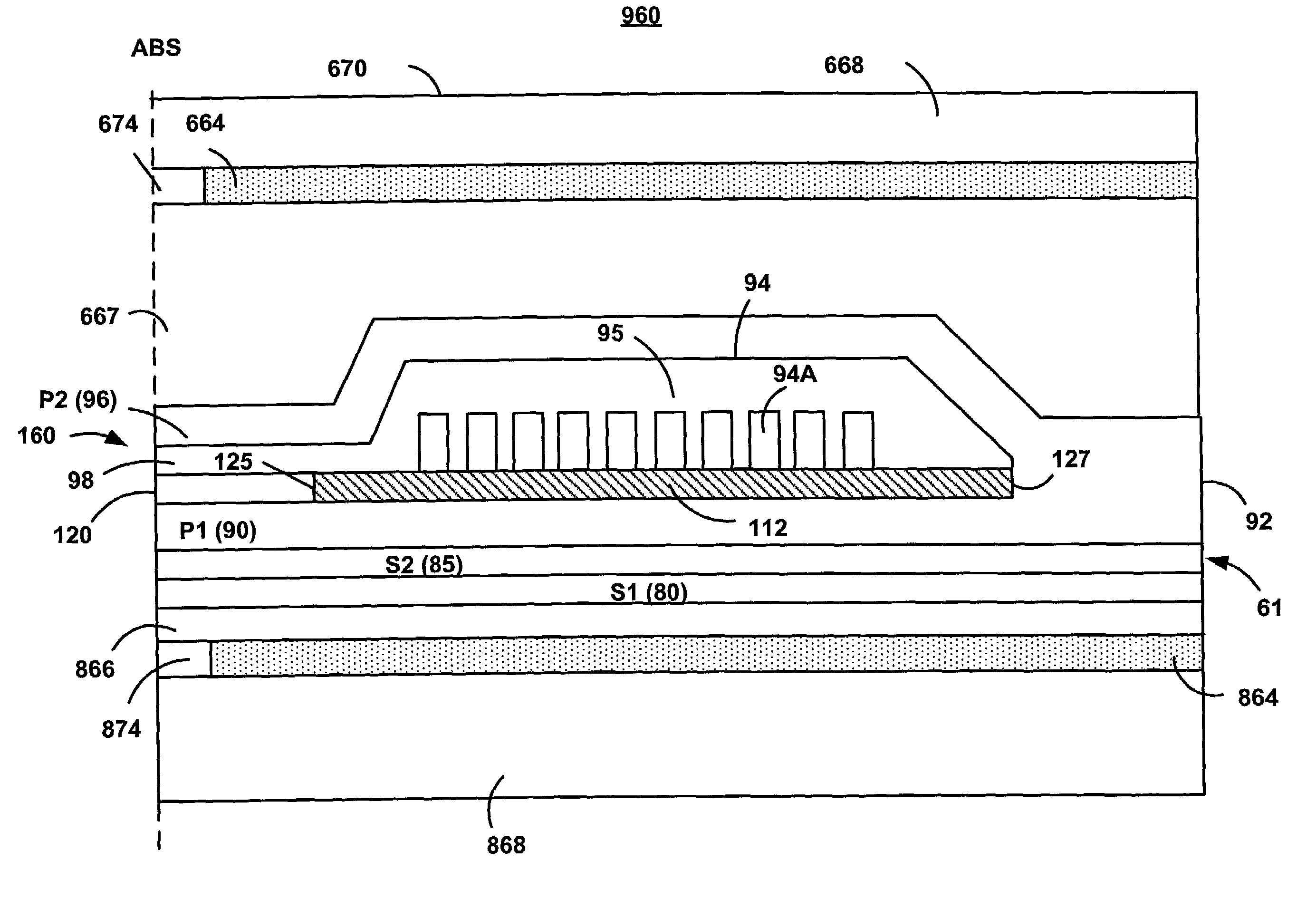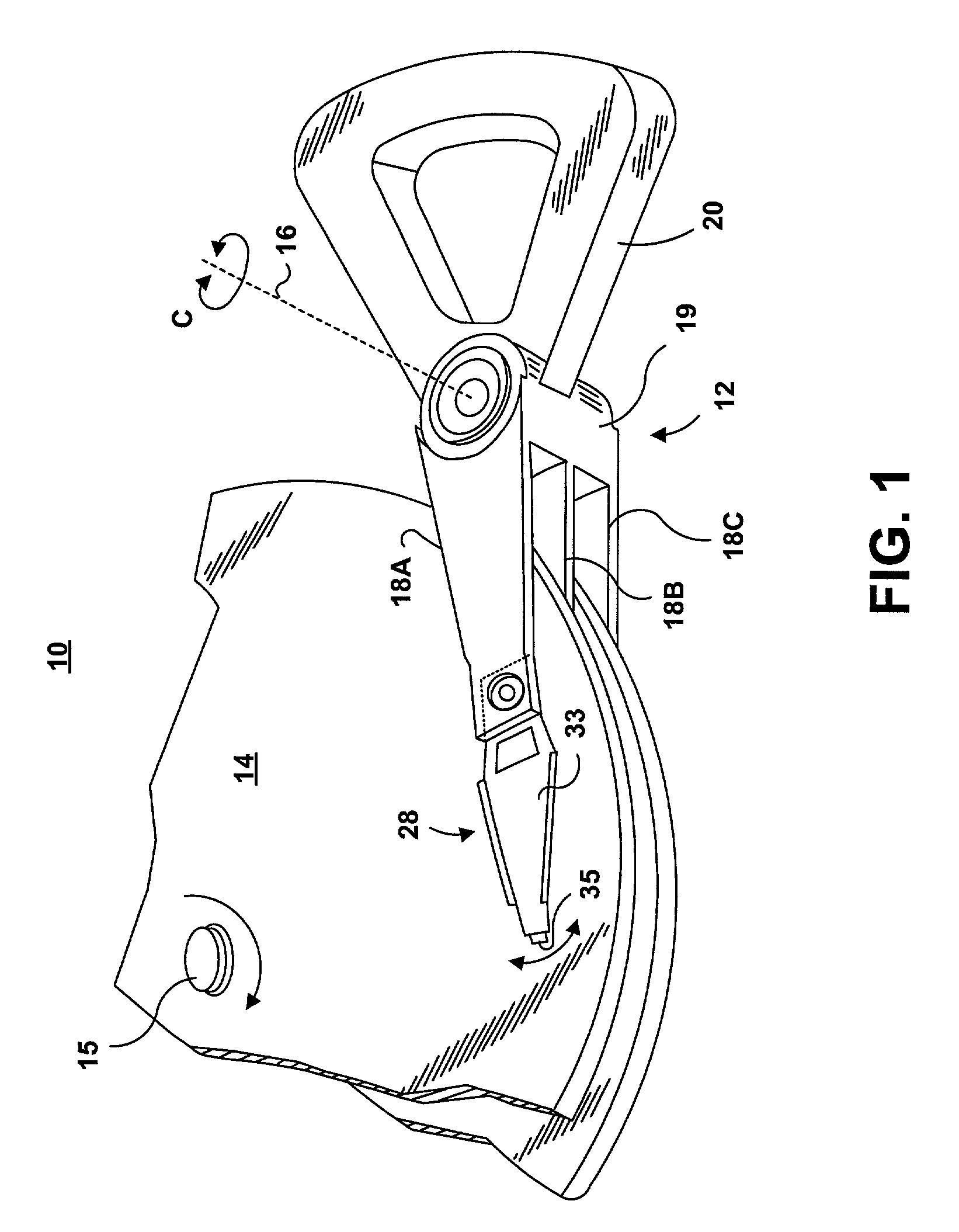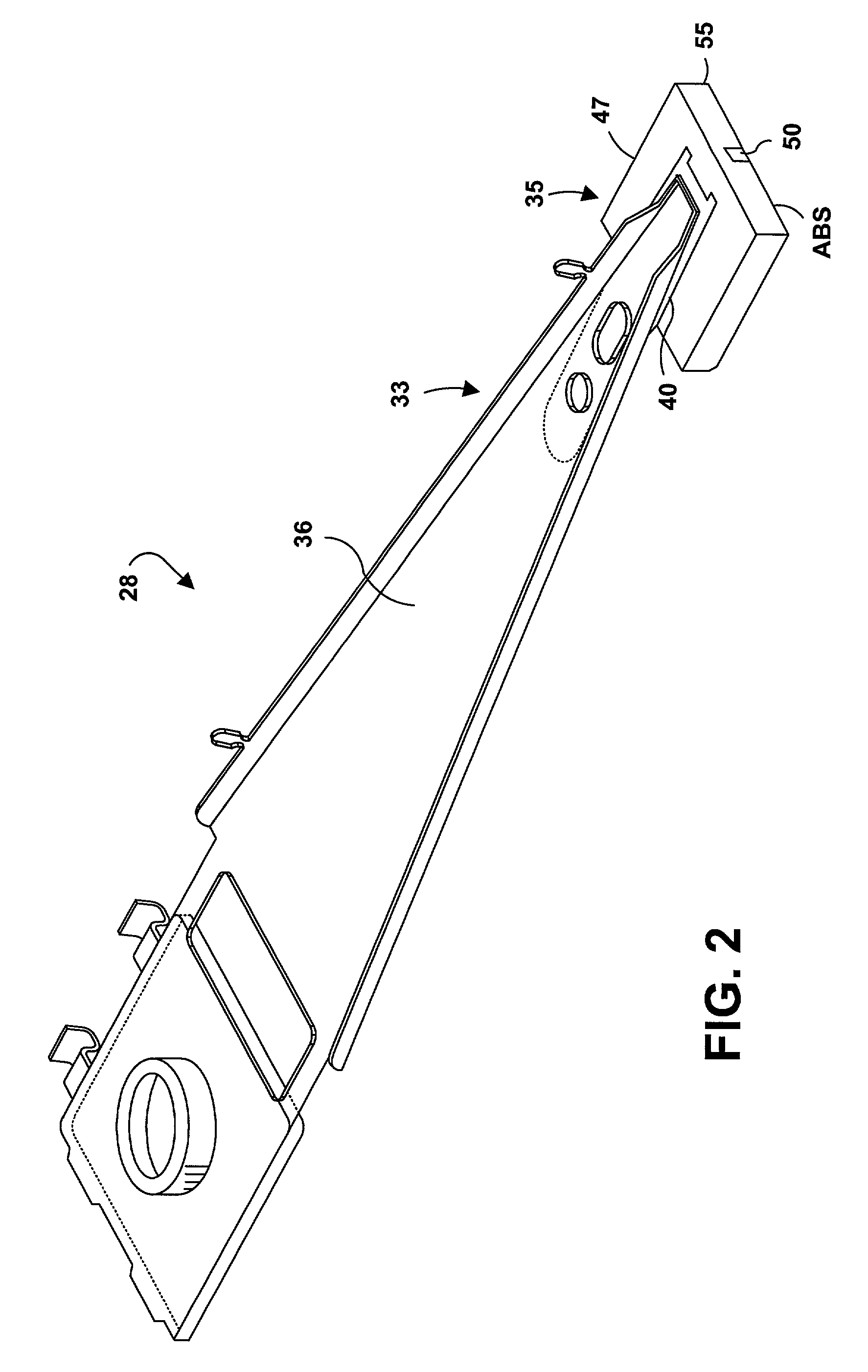System and method for minimizing thermal pole tip protrusion
a technology of thermal pole tip and protrusion, which is applied in the field of thin film magnetic read/write head, can solve the problems of additional elevation of air temperature, ambient heating effect of recording head, and localized heating effect of recording head, and achieve the effect of minimizing the protrusion of pole tip
- Summary
- Abstract
- Description
- Claims
- Application Information
AI Technical Summary
Benefits of technology
Problems solved by technology
Method used
Image
Examples
Embodiment Construction
[0038]FIG. 1 illustrates a disk drive 10 comprised of a head stack assembly 12 and a stack of spaced apart magnetic data storage disks or media 14 that are rotatable about a common shaft 15. The head stack assembly 12 is rotatable about an actuator axis 16 in the direction of the arrow C. The head stack assembly 12 includes a number of actuator arms, only three of which 18A, 18B, 18C are illustrated, which extend into spacings between the disks 14.
[0039]The head stack assembly 12 further includes an E-shaped block 19 and a magnetic rotor 20 attached to the block 19 in a position diametrically opposite to the actuator arms 18A, 18B, 18C. The rotor 20 cooperates with a stator (not shown) for rotating in an arc about the actuator axis 16. Energizing a coil of the rotor 20 with a direct current in one polarity or the reverse polarity causes the head stack assembly 12, including the actuator arms 18A, 18B, 18C, to rotate about the actuator axis 16 in a direction substantially radial to t...
PUM
 Login to View More
Login to View More Abstract
Description
Claims
Application Information
 Login to View More
Login to View More - R&D
- Intellectual Property
- Life Sciences
- Materials
- Tech Scout
- Unparalleled Data Quality
- Higher Quality Content
- 60% Fewer Hallucinations
Browse by: Latest US Patents, China's latest patents, Technical Efficacy Thesaurus, Application Domain, Technology Topic, Popular Technical Reports.
© 2025 PatSnap. All rights reserved.Legal|Privacy policy|Modern Slavery Act Transparency Statement|Sitemap|About US| Contact US: help@patsnap.com



